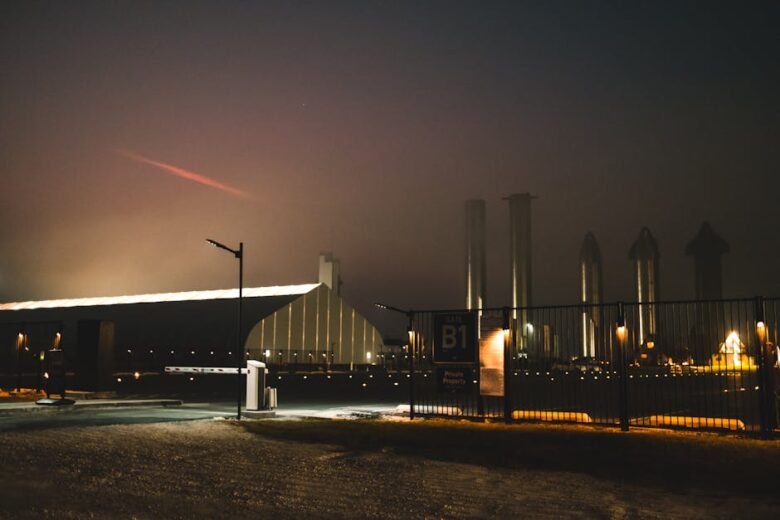The Future of UFO Detection Technology
The intrigue surrounding unidentified flying objects (UFOs) has captivated human imagination for decades. As technology advances, so does our ability to detect and analyze these mysterious phenomena. In this blog post, we’ll explore the cutting-edge technologies being developed for UFO detection and what the future might hold for this exciting field.
Table of Contents
1. Introduction
2. The Current State of UFO Detection
3. Emerging Technologies in UFO Detection
4. The Role of Artificial Intelligence 🤖
5. Government and Private Sector Involvement
6. Conclusion
7. FAQs
The Current State of UFO Detection
Today, UFO detection primarily relies on radar systems, eyewitness reports, and video footage. While these methods have yielded some intriguing evidence, they are often inconsistent and subject to human error. Many sightings remain unexplained, fueling both skepticism and curiosity.
Recently, governments have taken a more active role in investigating UFO phenomena. In 2020, the Pentagon officially released videos of “unidentified aerial phenomena” (UAPs), rekindling public interest and emphasizing the need for more sophisticated detection methods.
Emerging Technologies in UFO Detection
Advanced Radar Systems 📡
Next-generation radar systems are being developed to provide more precise data on UFOs. These systems can detect objects at greater distances and provide detailed information about their speed, size, and trajectory. Enhanced radar technology may soon enable us to differentiate between conventional aircraft and truly unidentified objects.
Satellite Surveillance 🚀
Satellites offer a unique vantage point for observing UFOs. With advancements in satellite imaging and real-time data transmission, researchers can now monitor large areas of the Earth’s atmosphere for unusual activity. This technology allows for continuous surveillance and can help corroborate or debunk sightings reported from the ground.
Infrared and Thermal Imaging 🌡️
Infrared and thermal imaging technologies are becoming increasingly important in UFO detection. These systems can capture objects that are not visible to the naked eye, providing valuable data on the heat signatures and movement patterns of unidentified objects. Such technology is pivotal in distinguishing between natural phenomena and potential extraterrestrial activity.
The Role of Artificial Intelligence 🤖
Artificial intelligence (AI) is revolutionizing many fields, and UFO detection is no exception. AI algorithms can process vast amounts of data from various sources, including radar, satellite feeds, and social media reports. By identifying patterns and anomalies, AI can help researchers focus on the most promising leads.
Machine learning models also enhance image analysis capabilities, allowing for better differentiation between known objects and potential UFOs. AI’s ability to learn and adapt makes it an invaluable tool in the ongoing quest to understand these mysterious phenomena.
Government and Private Sector Involvement
The exploration of UFO detection technology is not limited to government agencies. Private companies and research organizations are also investing in this area. Tech giants and startups alike are developing innovative solutions that may one day solve the UFO puzzle.
Increased collaboration between the public and private sectors could accelerate technological advancements and lead to more comprehensive studies of the phenomena, combining resources and expertise from a wide array of disciplines.
Conclusion
The future of UFO detection technology holds great promise. With advancements in radar, satellite, and imaging technologies, coupled with the power of AI, we are on the cusp of potentially groundbreaking discoveries. As interest and investment in this field grow, we may soon unravel the mysteries of the skies, providing answers to questions that have puzzled humanity for generations.
FAQs
What is the current state of UFO detection technology?
It primarily relies on radar systems, eyewitness reports, and video footage. Recent interest from governments, such as the Pentagon’s release of UAP videos, highlights the need for more advanced methods.
How can AI help in UFO detection?
AI can process large datasets from radar, satellites, and other sources, identifying patterns and anomalies that may indicate UFO activity. Its adaptability makes it a valuable tool in ongoing research.
Are private companies involved in UFO detection technology?
Yes, many private companies and research organizations are investing in innovative solutions to advance the field, often collaborating with government agencies to leverage combined expertise and resources.
Looking for a side hustle
Check out one of the best around atm
